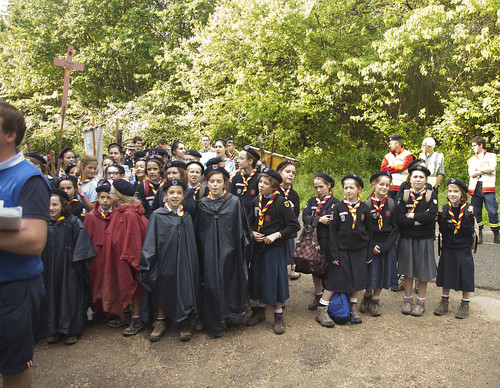Requiem and Michael Davies Memorial Lecture
SPONSORED BY THE LATIN MASS SOCIETY, LONDON
A requiem for Michael Davies was celebrated by Fr Tim Finigan in the Church of Our Lady of the Assumption and St Gregory, Warwick Street, London W1B 5LZ, at 5.30pm yesterday, Friday 10th July 2015. The Mass was accompanied with music by Cantus Magnus, under the direction of Matthew Schellhorn.
Following the Mass, The Michael Davies Memorial Lecture was delivered by Roberto de Mattei, Professor of Modern History and Christian History at the European University in Rome. His lecture was entitled 'From the Second Vatican Council to the Synod: The Teaching of Michael Davies'.
The lecture, which was held in the church hall at Warwick Street and chaired by Adrian Davies - Michael’s son, started at 6.30pm. The Mass and lecture were open to all.
Exclusive for Rorate Caeli
***
From the Second Vatican Council to the Synod:
The Teaching of Michael Davies
Roberto
de Mattei
Dear
friends,
It’s
an honour and a pleasure for me to be here to speak about the work of Michael
Davies, whom I met personally and consider one of the few true defenders of the
Catholic faith of the 20th century.
His
books anticipate those of Romano Amerio 1 and Monsignor Gherardini 2 and my History of
the Second Vatican Council II is also indebted to them.3
In
the first paragraph of his book Cranmer’s Godly Order (published in
1976) Michael Davies wrote that the Church was going through “the greatest crisis since the Protestant Reformation, quite possibly the
greatest since the Arian heresy”. For Davies this crisis has its most recent roots
in the Second Vatican Council to which he dedicated an entire volume, the
second of his memorable trilogy, The Liturgical Revolution.4
He
returned to Vatican II in 1992 with another important book: The Second
Vatican Council and Religious Liberty 5. The problems relating to the liturgy and
religious liberty at first glance, appear distant from each other but actually
have a common origin in the Second Vatican Council and its consequences.
In
this conference, I’ll be focusing on the fundamental aspect of Mr. Davies’
work: that is, his contribution to the understanding of Vatican II and its
aftermath.
The convocation of the Second Vatican Council
On
October 9th 1958 Pope Pius XII died. On January 25th
1959, only three months after his election to the papal throne, the new Pope,
John XXIII, announced the convocation of the Second Vatican Council.
Davies
retraces Vatican II starting from its convocation, by using the words of
Cardinal Pietro Sforza Pallavicino (1607-1667), a historian of the Council of
Trent, quoted by Cardinal Manning: “… to convoke a General Council, except
when absolutely demanded by necessity, is to tempt God”6.
This
was not what some conservative cardinals thought, seeing that from the moment
John XXIII was elected, they encouraged him to convoke an ecumenical Council.
The First Vatican Council had been brusquely interrupted by the Franco-Prussian
war in 1870, and these cardinals imagined its continuation – in their
intentions - would be culminated with
the drafting of a “Syllabus” of contemporary errors. They counted on the
support of Monsignor Domenico Tardini, seeing that they had imposed on John
XXIII, Tardini’s nomination as cardinal and Secretary of State, as a condition
for his election to the Papacy.
Monsignor
Tardini’s unexpected death on July 30th 1961, while the preparatory phase for
the Council was in progress, upset these plans. The conservative cardinals
also, overestimated the strength of the Roman Curia and underestimated their
adversaries,’ who were forming a powerful and well-organized party. In his
book, The Rhine flows into the Tiber, Father Ralph Wiltgen, was the
first to reveal the existence of this organized structure.7 In my book about the
Council I reported new elements based on the memories of some protagonists and
some archival documents, which came to light in recent years.
In June
1962, when the first seven schemas of the conciliar constitutions (which had been worked on by ten committees for
three years under the supervision of Cardinal Alfredo Ottaviani) were submitted
to the Pope, John XXIII was still convinced that the Council would have been
closed by December. The Pope approved the preparatory schemas and in July,
three months before the opening of the Council, ordered that they be sent to
all the Council Fathers, as a basis for discussion at the general
congregations.
The
Second Vatican Council opened in St. Peter’s Basilica on October 11th
1962.



















